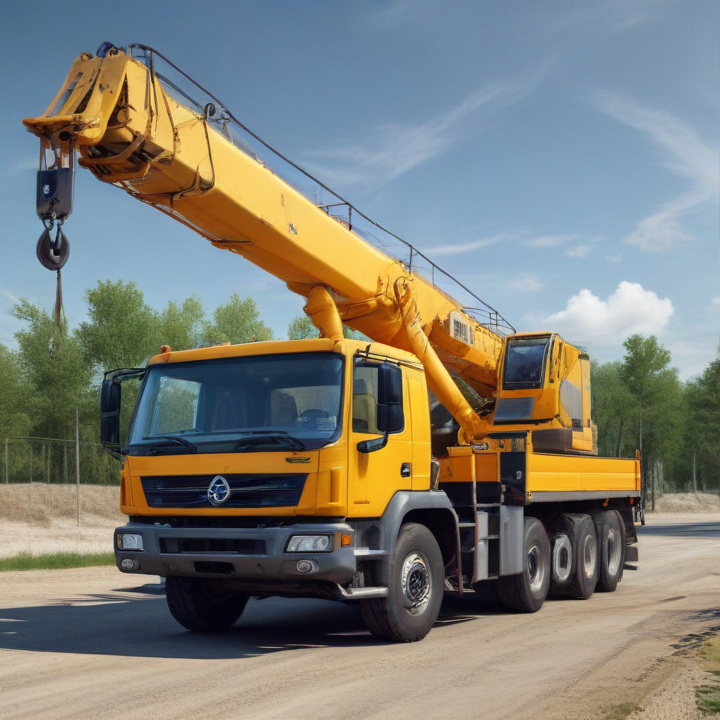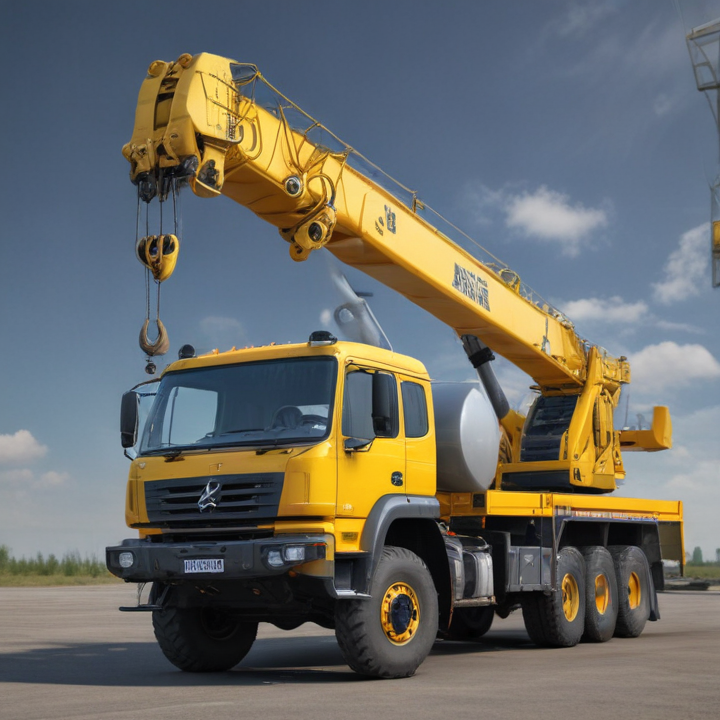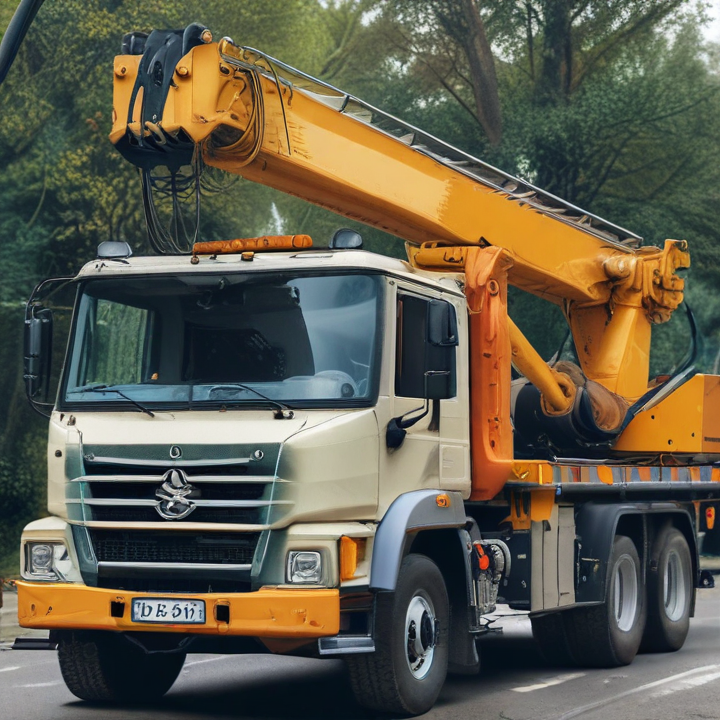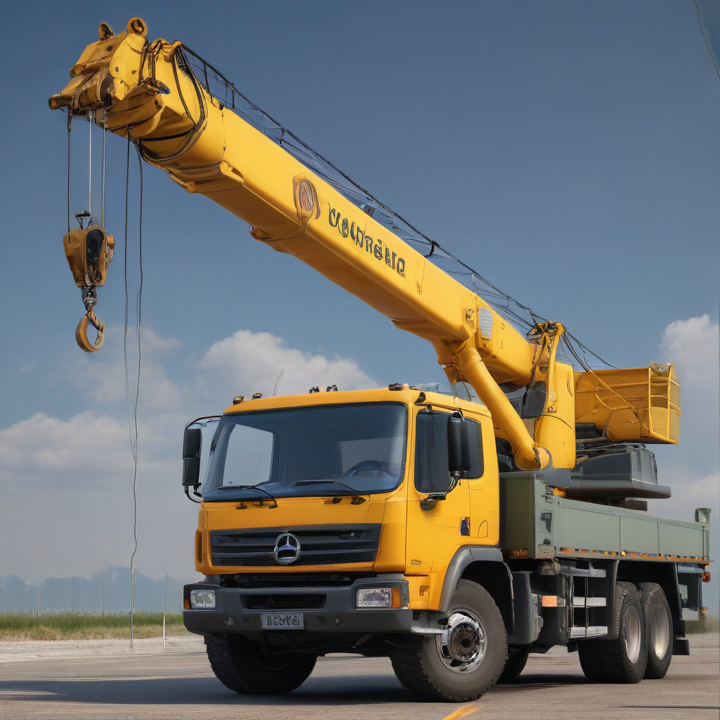truck mounted crane Safety Certifications
Truck-mounted cranes, essential for lifting and transporting heavy loads, must comply with rigorous safety standards. Here are some key safety certifications and guidelines relevant to these cranes:
1. OSHA (Occupational Safety and Health Administration): In the United States, OSHA establishes and enforces standards, including crane safety regulations found in 29 CFR Part 1926 Subpart CC. Compliance ensures worker safety through proper operation, inspections, and maintenance of truck-mounted cranes.
2. ANSI (American National Standards Institute): Specifically, ANSI/ASME B30.5 provides guidelines for the construction, inspection, testing, maintenance, and operation of mobile and locomotive cranes, including truck-mounted variants.
3. CIC (Crane Institute Certification): This certification program ensures operators, riggers, and inspectors possess the necessary knowledge and skills to safely handle truck-mounted cranes. Various levels of certification exist depending on job roles.
4. NCCCO (National Commission for the Certification of Crane Operators): Recognized nationwide, NCCCO certification ensures operators have met rigorous written and practical examination standards. It’s a mark of competency and safety awareness.
5. LOLER (Lifting Operations and Lifting Equipment Regulations 1998): In the UK, LOLER mandates that lifting equipment, including truck-mounted cranes, must be safe for use. Regular thorough examinations by a competent person are part of compliance.
6. FEM (Fédération Européenne de la Manutention): In Europe, FEM provides guidelines focusing on the safety and performance of lifting equipment. Adherence to these recommendations ensures high standards.
7. ISO (International Organization for Standardization): ISO 9927-1 covers crane inspection, utilization, and maintenance worldwide. Following ISO guidelines helps in maintaining international safety standards.
These certifications and guidelines collectively ensure that truck-mounted cranes operate safely and efficiently, protecting both operators and the surrounding environment. Regular training, strict adherence to safety protocols, and periodic inspections are crucial for compliance and safety.
List Reference Technical Parameters of “truck mounted crane”
A truck-mounted crane integrates a crane with a commercial truck chassis, combining mobility with lifting capabilities. Here are some key technical parameters:
1. Lifting Capacity: Defines the maximum load the crane can lift, typically ranging from 1 ton to 500 tons depending on the model and manufacturer.
2. Boom Length: The length of the crane’s boom, which can be telescopic or articulated, usually spans from 10 to 200 feet, affecting the reach and height capabilities.
3. Horizontal Outreach: Measures the maximum horizontal distance the crane can extend, crucial for positioning loads correctly, often from 10 to 150 feet.
4. Lifting Height: Maximum vertical distance the crane can lift a load, often reaching up to 200 feet or more with extended booms and jibs.
5. Rotation Angle: The degree to which the crane can rotate, typically 360 degrees, enabling full operational flexibility.
6. Stabilizers/Outriggers: Telescopic or fixed legs deployed to stabilize the truck during lifting operations, ensuring safety and load balance.
7. Hydraulic Systems: Utilized to power the crane’s movements—important parameters include pressure ratings (typically 1500 to 2500 psi) and flow rates, influencing operational speed and efficiency.
8. Gross Vehicle Weight (GVW): The total weight of the truck, including the crane and any load, can range from 7.5 tons to over 50 tons, impacting road regulations and maneuverability.
9. Engine Power: The power output of the truck’s engine, often between 200 to 500 horsepower, directly affects the crane’s operational capacity and speed.
10. Control Systems: Advanced models feature electronic or wireless remote controls, enabling precise and safe manipulation of the crane’s operations.
11. Setup Time: The duration required to prepare the crane for lifting, typically varying from 15 minutes to an hour, depending on system complexity.
12. Transport Dimensions: Important for logistics, including overall length, width, and height of the truck with the crane in stowed position.
Optimizing these parameters ensures a truck-mounted crane can effectively meet diverse operational demands in construction, utilities, and logistics.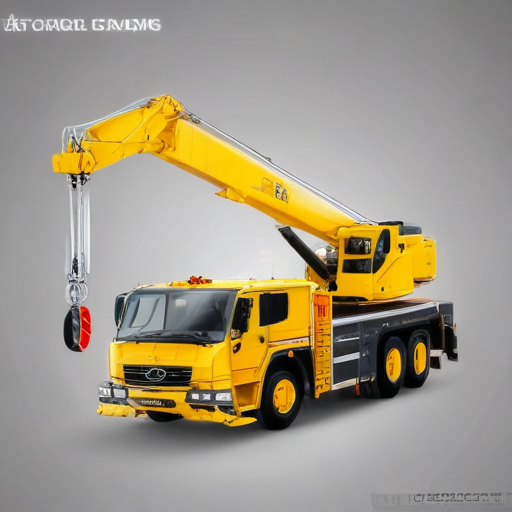
List Product features of “truck mounted crane”
A truck-mounted crane is a type of mobile crane that consists of a crane mounted on a truck for mobility and versatility. Here are some common product features:
1. Mobility: The crane is mounted on a truck chassis, enabling it to move easily from one location to another. Ideal for on-road and off-road applications.
2. Versatile Lifting Capacities: Available in various lifting capacities, from a few tons to several hundred tons, catering to different project requirements.
3. Boom Options: Features telescopic or lattice booms, providing flexibility in reach and height. Telescopic booms offer variable length adjustments, while lattice booms provide greater lifting capacities and heights.
4. Hydraulic Systems: Equipped with advanced hydraulic systems for smooth and precise lifting operations. This enhances control and efficiency.
5. Stabilization: Outriggers and stabilizers provide additional stability during lifting operations, ensuring safety and balance.
6. 360-Degree Rotation: Many models offer full 360-degree rotation, allowing for flexible positioning and operation in confined spaces.
7. Operator Cab: Ergonomically designed operator cabs with advanced control systems, ensuring operator comfort and safety. Features may include air conditioning, adjustable seats, and intuitive controls.
8. Safety Features: Includes load moment indicators (LMI), anti-two block systems, and overload protection to prevent accidents and ensure safe operation.
9. Customization: Options for customization with attachments like winches, jibs, and special hooks to meet specific project needs.
10. Durability: Built with robust materials to withstand harsh working environments. Often features corrosion-resistant coatings and heavy-duty construction.
11. Fuel Efficiency: Modern models may include fuel-efficient engines to reduce operational costs and environmental impact.
12. Telematics: Advanced models may offer telematics for real-time monitoring of crane performance, diagnostics, and maintenance schedules.
These features make truck-mounted cranes versatile tools for construction, logistics, utilities, and other industries requiring efficient and mobile lifting solutions.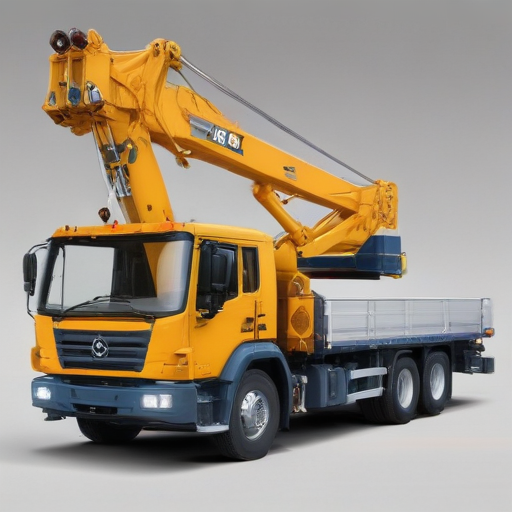
List Various Types of “truck mounted crane”
Truck-mounted cranes are versatile lifting machines integrated into the chassis of trucks. Here are the main types:
1. Boom Truck Cranes: These cranes feature a telescopic arm (boom) that extends for lifting and moving heavy loads. They are commonly used for shorter projects, including construction and utility work.
2. Knuckle Boom Cranes (Articulating Cranes): Known for their compact design, these cranes have a jointed boom that can fold and unfold like a finger. They are particularly effective in confined spaces and often used in the delivery of building materials.
3. Rough Terrain Cranes: Built on a truck-like chassis with four large rubber tires, these cranes are designed for off-road construction sites. They offer great maneuverability and stability on uneven ground.
4. All-Terrain Cranes: Combining the features of rough terrain and truck-mounted cranes, these cranes can navigate both paved highways and rough terrain. They are versatile and used in various construction and maintenance applications.
5. Truck Loader Cranes: Often referred to as lorry-mounted cranes, these cranes are typically smaller and used for loading and unloading goods. They are a common sight in logistics and transport industries.
6. Bridge Inspection Cranes: Specialized for inspecting and maintaining bridges, these cranes have unique articulations that allow them to reach under bridges and other hard-to-access areas.
7. Carry Deck Cranes: Small, 4-wheel cranes with a 360-degree rotating boom that can navigate tight spaces. They are often used for industrial and maintenance tasks.
8. Service Cranes: Mounted on service trucks, these cranes are smaller and used for vehicle rescue, repair, and routine maintenance operations.
Each type offers distinct advantages depending on the specific requirements of the job, such as terrain, accessibility, and load capacity.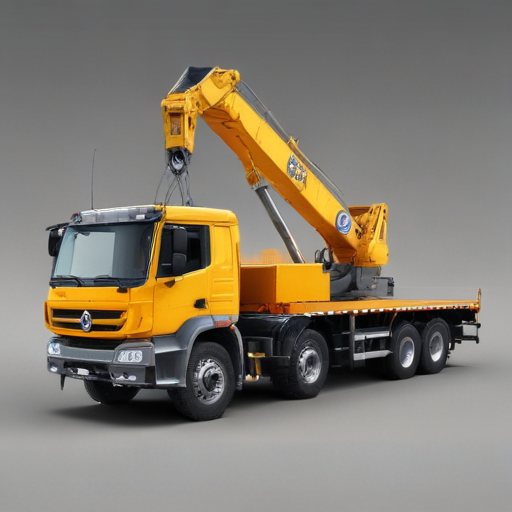
List Application of “truck mounted crane”
Truck-mounted cranes are versatile pieces of equipment commonly used in various industries for lifting and moving heavy objects. Here is a list of applications for truck-mounted cranes:
1. Construction Sites: Used for lifting heavy building materials such as steel beams, concrete blocks, and construction machinery to different heights and locations on site.
2. Transport and Logistics: Essential for loading and unloading heavy cargo from trucks and trailers, especially in logistics hubs, warehouses, and ports.
3. Utility Maintenance: Employed by utility companies for installing and maintaining electrical poles, transformers, and other infrastructure.
4. Emergency Services: Used in disaster recovery operations to remove debris, lift damaged structures, and assist in rescue missions.
5. Infrastructure Projects: Invaluable in road, bridge, and tunnel construction for transporting and positioning components such as girders, segments, and prefabricated sections.
6. Oil and Gas Industry: Facilitates the lifting of heavy drilling equipment, pipes, and materials in both onshore and offshore drilling operations.
7. Telecommunications: Assists in erecting and maintaining cell towers and other communication infrastructure.
8. Railway Maintenance: Deployed for laying tracks, installing signals, and maintaining railway infrastructure.
9. Tree Services: Utilized by arborists and tree service companies to safely remove, trim, or repair large trees.
10. Maritime Uses: Handy in shipyards and docks for lifting and positioning boat components, engines, and other heavy maritime equipment.
11. Mining Operations: In mining, truck-mounted cranes are used to handle large equipment, pipes, and other heavy materials.
12. Event Management: Employed in setting up stages, lighting, and large tents for concerts, festivals, and other large events.
These applications highlight the truck-mounted crane’s critical role in improving efficiency, safety, and productivity across a wide range of sectors.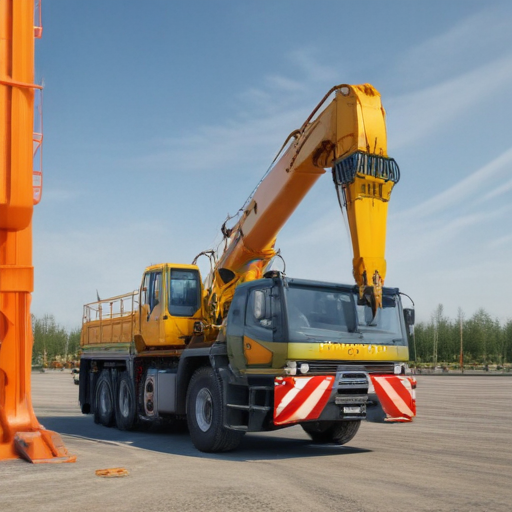
List Buyer Types of “truck mounted crane”
The market for truck-mounted cranes is diverse, encompassing various buyer types across multiple industries. Here’s an overview of the primary buyer groups:
1. Construction Companies: These firms frequently require truck-mounted cranes for tasks such as material handling, equipment installation, and structural assembly. The mobility of these cranes is invaluable on construction sites, allowing them to navigate and operate in confined spaces.
2. Logistics and Freight Companies: Logistics providers use truck-mounted cranes for loading and unloading heavy cargo, especially when dealing with oversized or awkwardly shaped goods. These cranes offer the flexibility and efficiency needed to handle diverse shipment types.
3. Utility Companies: Companies in the electric, water, and telecommunications sectors often use truck-mounted cranes for maintenance and installation work. They are essential for tasks like setting up utility poles, repairing lines, and installing heavy equipment.
4. Oil and Gas Industry: Exploration and extraction sites frequently require truck-mounted cranes for tasks such as moving heavy drilling equipment, positioning pipes, and assembling modular units. Portability and lifting power make these cranes ideal for remote and rugged environments.
5. Municipalities and Government Agencies: Public sector entities use truck-mounted cranes for infrastructure repair, disaster response, and public works projects. They are crucial for tasks like debris removal, tree trimming, and road sign installation.
6. Mining Operations: In mining, these cranes are utilized for heavy lifting requirements, machinery relocation, and maintenance tasks. Their durability and ease of transport make them suitable for harsh mining conditions.
7. Manufacturing Firms: Factories and production facilities use truck-mounted cranes for moving heavy components, assembling large products, and loading materials onto transport vehicles. They enhance operational efficiency and safety within industrial environments.
8. Event and Entertainment Companies: These businesses employ truck-mounted cranes to set up stages, lighting rigs, and other large structures for concerts, festivals, and events. Quick setup and teardown capabilities are essential in this sector.
9. Waste Management and Recycling: Companies in this industry use these cranes to handle heavy waste containers and recyclables. They facilitate the efficient loading and unloading of materials, improving operational workflows.
These varied buyer types highlight the versatility and critical role of truck-mounted cranes across different industries, driven by the need for powerful, mobile lifting solutions.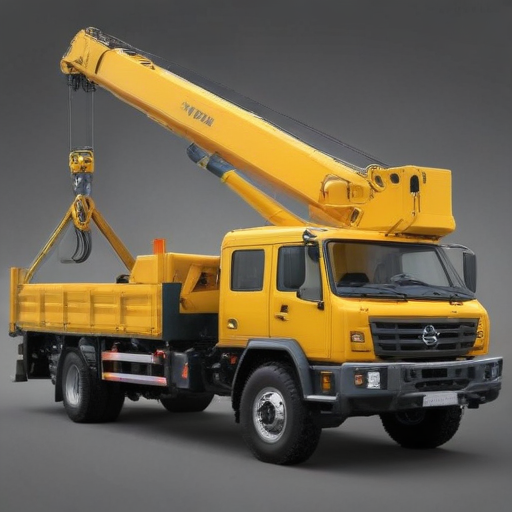
List “truck mounted crane” Project Types for Different Industries
Truck-mounted cranes are versatile pieces of machinery widely utilized across various industries. Here’s a consolidated list of project types tailored for different industries:
1. Construction Industry:
– Building Erection: Assisting in assembling steel structures, placing precast concrete, and lifting heavy materials to higher floors.
– Infrastructure Projects: Used for road construction, bridge building, and setting up large-scale infrastructure including pylons and towers.
2. Energy Sector:
– Wind Turbine Installation: Transporting and erecting wind turbines in remote or challenging locations.
– Power Line Maintenance: Facilitating the installation and repair of high-voltage power lines and utility poles.
3. Mining Industry:
– Equipment Relocation: Moving heavy mining equipment from one site to another.
– Shaft Construction: Assisting with the construction of mine shafts and underground tunnels.
4. Oil and Gas:
– Pipeline Installation: Lifting and positioning sections of pipeline.
– Offshore Projects: Assisting in the assembly and maintenance of offshore platforms and rigs.
5. Manufacturing and Warehousing:
– Machine Installation: Relocating and installing large manufacturing machinery and equipment.
– Loading and Unloading: Facilitating the transport and placement of heavy goods and materials in warehouses.
6. Logistics and Transportation:
– Freight Handling: Assist in loading and unloading large cargo from ships, planes, and trains.
– Port Operations: Used in the loading and unloading operations at docks and terminals.
7. Emergency Services and Recovery:
– Disaster Response: Assisting in clearing debris and lifting heavy objects during disaster recovery operations.
– Vehicle Recovery: Recovering heavy vehicles and machinery after accidents or breakdowns.
8. Entertainment Industry:
– Event Setup: Assisting in the setup of stages, lighting rigs, and other large structures for concerts and events.
– Film Production: Handling large props, set pieces, and specialized equipment.
Each project type demonstrates the crucial role of truck-mounted cranes in operational efficiency and safety in various industrial applications.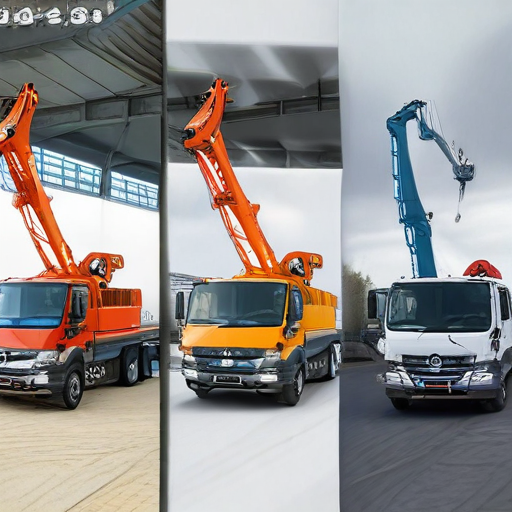
truck mounted crane Accessories Upgrades and Custom Manufacturing Options
Truck-mounted cranes are versatile pieces of equipment essential for lifting and moving heavy loads on job sites. Accessories, upgrades, and custom manufacturing options can significantly enhance their utility and performance. Here’s a concise overview:
1. Accessories:
– Remote Controls: Wireless remote control systems allow operators to maneuver cranes from a safe distance, increasing precision and safety.
– Outrigger Pads: High-quality outrigger pads provide a stable base, crucial for preventing tipping and ensuring operational safety.
– Load Indicators: Real-time load indicators display the weight being lifted, helping operators avoid overloading and potential hazards.
– Toolboxes: Customizable toolboxes mounted on the truck can store necessary tools and equipment, ensuring everything is within easy reach.
– Lighting: Additional work lights improve visibility during nighttime or low-light operations, enhancing safety and productivity.
2. Upgrades:
– Hydraulic Systems: Advanced hydraulic systems offer smoother and more powerful lifting capabilities, which can handle heavier loads more efficiently.
– Swivel Hooks: Swivel hooks provide better maneuverability of loads and reduce the twist on lifting cables, leading to longer cable life.
– Boom Extensions: Telescopic boom extensions increase the reach of the crane, making it possible to lift loads from greater distances or heights.
– Jib Attachments: Jibs add extra length and flexibility to the boom, allowing for more versatile lifting options in tight spaces.
3. Custom Manufacturing:
– Tailor-made Platforms: Custom platforms can be designed to fit specific operational needs, from unique deck layouts to specialized mounting configurations.
– Specialized Attachments: Tailor-made attachments like grapples, augers, or hydraulic winches can be designed to meet niche requirements.
– Ergonomic Cabins: Customized operator cabins improve comfort and ergonomics, which can boost operator efficiency and decrease fatigue.
– Advanced Control Systems: Customizable control panels with user-friendly interfaces enhance operational control and monitoring.
Investing in these accessories, upgrades, and custom options ensures your truck-mounted crane is best suited to your specific needs, maximizing both performance and safety.
List Quality Control and The Manufacturing Process of “truck mounted crane”
Quality Control and Manufacturing Process of Truck-Mounted Cranes
Manufacturing Process:
1. Design and Engineering:
– Engineers draft blueprints and specifications.
– Simulations and CAD models for structural integrity and performance.
2. Material Procurement:
– High-strength steel and hydraulic components sourced.
– Quality checks on raw materials.
3. Fabrication:
– Cutting and shaping steel using CNC machines.
– Welding components to form the crane structure.
4. Machining:
– Precision machining of parts like booms, winches, and gears.
– Ensures tight tolerances and proper fit.
5. Assembly:
– Integration of hydraulic systems, motors, and controls.
– Assembling the crane onto truck chassis.
6. Electrical and Hydraulic Systems:
– Installation of electrical wiring and hydraulic lines.
– Testing systems for functionality and leaks.
7. Painting and Finishing:
– Surface treatment to prevent rust.
– Applying paint for aesthetics and protection.
8. Final Inspection:
– Comprehensive check before dispatch.
Quality Control:
1. Raw Material Inspection:
– Verifying material specifications.
– Testing tensile strength, yield, and composition.
2. In-Process Inspection:
– Continuous checks during fabrication and assembly.
– Dimensional accuracy, weld quality, and alignment.
3. Non-Destructive Testing:
– Ultrasonic, radiographic, or magnetic particle testing.
– Assures structural integrity without damaging parts.
4. Hydraulic System Testing:
– Pressure tests for leakage and performance under load.
– Ensuring hydraulic fluid purity and correct installation.
5. Load Testing:
– Simulating operational conditions.
– Checking balance, lifting capacity, and stability.
6. Electrical System Check:
– Testing control systems and safety interlocks.
– Ensuring compliance with safety standards.
7. Final Quality Audit:
– Comprehensive review of all inspection records.
– Ensuring all standards and customer requirements are met.
By focusing on stringent quality control and a robust manufacturing process, truck-mounted cranes are built to be reliable, safe, and efficient for diverse lifting operations.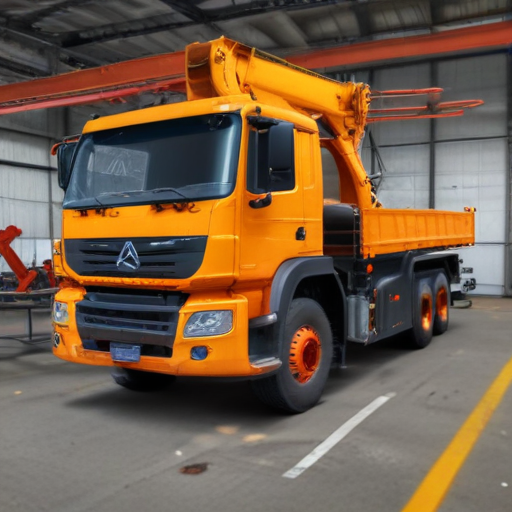
How to use “truck mounted crane”
A truck-mounted crane is versatile equipment used for lifting and moving heavy loads. Here’s a step-by-step guide to using it safely and efficiently:
1. Pre-Operation Checks:
– Inspection: Conduct a thorough inspection. Check hydraulic systems, tires, outriggers, and load charts.
– Stability: Ensure the ground is stable. Use outriggers if available, and place pads under them for additional support.
2. Setting Up:
– Positioning: Park the truck on firm, level ground.
– Outriggers: Deploy outriggers for stability. Ensure the truck is level before operating the crane.
– Safety Zone: Establish a clear safety zone around the crane to keep unauthorized personnel away.
3. Operating the Crane:
– Controls Familiarity: Familiarize yourself with the control panel, including levers and switches.
– Boom Extension: Gradually extend the boom to the required length.
– Load Lifting: Attach the load securely using appropriate lifting gear. Use slings, hooks, or chains as required.
– Lifting Process: Lift the load slowly. Avoid sudden movements to prevent instability.
– Rotation: Rotate the crane smoothly in the required direction. Maintain visual contact with the load and surroundings.
4. Safety Precautions:
– Overloading: Never exceed the crane’s load capacity. Refer to the load chart.
– Communication: Use hand signals or radios for clear communication between the operator and ground personnel.
– Weather Conditions: Avoid operating the crane in strong winds or severe weather.
5. After Operation:
– Securing: Lower the boom and secure it. Retract the outriggers and ensure the truck is ready for transport.
– Maintenance: Perform routine maintenance checks and address any issues promptly.
By following these steps, you can operate a truck-mounted crane safely and effectively. Always adhere to manufacturer guidelines and safety regulations.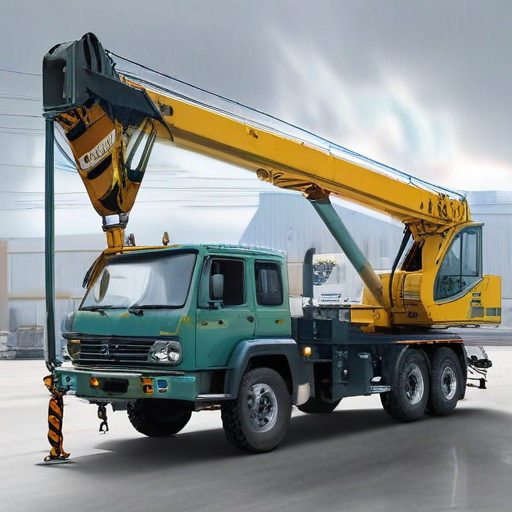
“truck mounted crane” Comparative Analysis
A truck-mounted crane is a versatile piece of equipment combining the functionality of a truck and a crane. It offers mobility and lifting capacity, making it essential for various industries such as construction, logistics, and utilities. Here’s a comparative analysis of truck-mounted cranes:
Advantages:
1. Mobility:
– Strength: Truck-mounted cranes can travel on highways, enabling rapid site-to-site movement without the need for additional transport vehicles.
– Comparison: Unlike stationary cranes, these cranes can be driven directly to the job site, saving time and reducing logistical complexity.
2. Setup Time:
– Strength: They have a faster setup and teardown time compared to traditional tower cranes or crawler cranes.
– Comparison: This efficiency can lead to significant cost savings, especially in projects requiring frequent equipment relocation.
3. Versatility:
– Strength: Capable of handling various tasks, from lifting heavy loads to placing materials at height.
– Comparison: Tower cranes are restricted to specific sites and operate within limited vertical spaces, whereas truck-mounted cranes offer greater operational flexibility.
4. Cost-Effective:
– Strength: Often more economical than other crane types for short-term projects.
– Comparison: Tower cranes and crawler cranes can be more expensive due to their longer setup times and need for large foundation setups.
Limitations:
1. Lifting Capacity:
– Weakness: Generally, truck-mounted cranes have lower lifting capacities compared to specialist cranes like hydraulic or crawler cranes.
– Comparison: Crawler cranes can lift heavier loads and are best suited for large-scale, high-capacity requirements.
2. Stability:
– Weakness: Stability can be a concern, particularly on uneven terrain without adequate outriggers.
– Comparison: Crawler cranes offer superior stability on rough terrains due to their tracked undercarriage.
3. Maintenance and Wear:
– Weakness: Being road-going vehicles, they require regular maintenance to ensure both the crane and truck are in optimal condition.
– Comparison: Stationary cranes have fewer moving parts and consequently lower wear and tear on non-operational days.
Conclusion:
Truck-mounted cranes offer a balanced mix of mobility and functionality, making them ideal for diverse and dynamic job sites. However, their limitations in lifting capacity and stability must be considered when planning for heavy-duty tasks. For projects needing high lifting capability or extensive stability, alternative crane types might be more suitable.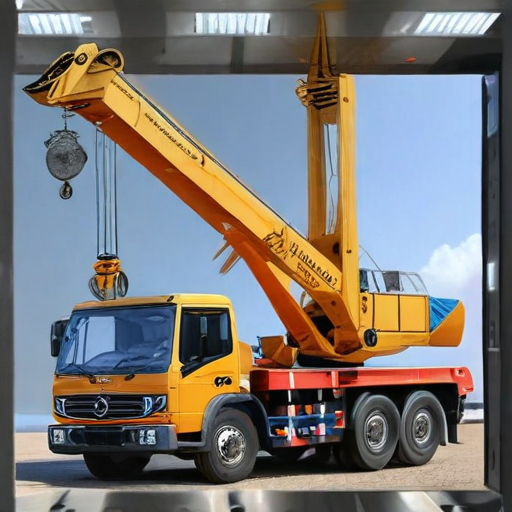
“truck mounted crane” Warranty and Support
Warranty and Support for Truck-Mounted Cranes
Warranty:
When purchasing a truck-mounted crane, it’s crucial to understand the warranty details specific to your model and manufacturer. Generally, manufacturers offer a standard warranty ranging from one to three years, covering defects in materials and workmanship. Some premium models may include extended warranties for the crane’s main components, such as the hydraulic system, boom, and control systems. Often, warranties are accompanied by terms and conditions specifying regular maintenance and proper usage to remain valid. Regular service by authorized dealers may be required to ensure full warranty benefits.
Support:
Top manufacturers provide comprehensive support services to maintain the operational efficiency of your truck-mounted crane. These services typically include:
1. Customer Service: Dedicated support teams are usually available for inquiries regarding operation, troubleshooting, and maintenance.
2. Maintenance Packages: Many suppliers offer scheduled maintenance plans, which often complement the warranty terms. These packages minimize downtime and enhance the longevity of your equipment.
3. Parts Availability: Ensuring the availability of genuine spare parts is crucial. Manufacturers usually maintain a well-stocked inventory, enabling quick replacement to reduce operational delays.
4. Training: Operator and maintenance staff training programs are often available to ensure safe and efficient use of the cranes. These programs can be delivered on-site or through dedicated training centers.
5. Technical Assistance: Expert technicians provide on-call support for urgent repair needs. Many manufacturers also offer remote diagnostic services to quickly identify and address issues.
6. Online Resources: User manuals, maintenance guides, and troubleshooting tips are typically available on the manufacturer’s website, providing 24/7 access to critical information.
By leveraging these warranty and support services, owners can maximize their truck-mounted crane’s performance, ensuring safety, reliability, and productivity.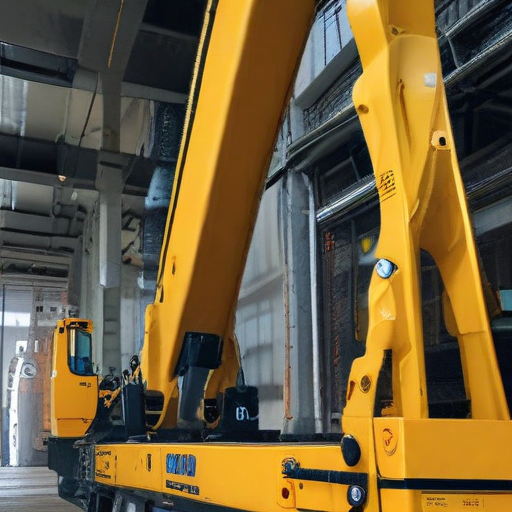
List “truck mounted crane” FAQ
Sure, here’s a concise list of Frequently Asked Questions (FAQs) about truck-mounted cranes:
Truck-Mounted Crane FAQ
#### 1. What is a truck-mounted crane?
A truck-mounted crane is a mobile crane that is mounted on a truck chassis, combining the mobility of a truck with the lifting capabilities of a crane.
#### 2. What are the main uses of truck-mounted cranes?
They are commonly used for construction, heavy lifting, transportation of heavy materials, and other industrial applications that require moving heavy objects over short distances.
#### 3. What are the advantages of truck-mounted cranes?
Key advantages include high mobility, versatility, ease of set-up, and the ability to move quickly between job sites without the need for additional transportation.
#### 4. How much can a truck-mounted crane lift?
Lifting capacity varies by model, typically ranging from a few tons to over 100 tons. Always refer to the crane’s specification sheet for precise capacities.
#### 5. Do I need special training or a license to operate a truck-mounted crane?
Yes, operators usually need to be certified and may require specific licenses depending on local regulations and the crane’s size and complexity.
#### 6. How do you stabilize a truck-mounted crane during operation?
Stabilization is crucial and is typically achieved using outriggers that extend from the sides of the truck to provide a wider base and more stability.
#### 7. Can a truck-mounted crane drive on public roads?
Yes, one of the benefits of truck-mounted cranes is their ability to travel on public roads, subject to weight and size restrictions.
#### 8. What maintenance is required for a truck-mounted crane?
Routine maintenance includes inspecting hydraulic systems, checking and replacing worn parts, lubricating moving components, and ensuring the structural integrity of the crane and truck.
#### 9. How do I choose the right truck-mounted crane?
Consider factors such as lifting capacity, reach, mobility needs, and the specific requirements of your projects to determine the most suitable model.
#### 10. What safety precautions should be taken when using a truck-mounted crane?
Always follow manufacturer guidelines, conduct regular inspections, ensure operators are properly trained, use proper rigging techniques, and never exceed rated capacities.
These FAQs provide a quick overview of key considerations and information related to truck-mounted cranes.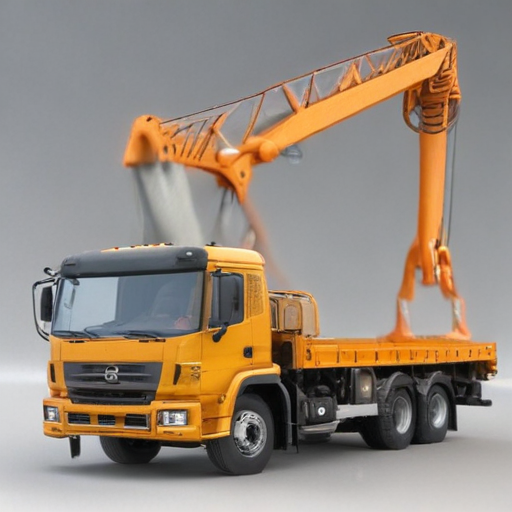
Top 10 FAQ with answer about truck mounted crane for Buyer Sourcing from China
Sure, here are the top 10 frequently asked questions (FAQ) about sourcing truck-mounted cranes from China along with their answers:
1. What are Truck-Mounted Cranes?
Truck-mounted cranes are cranes mounted on a truck for easy transportation and versatility. They are used for lifting and moving loads at construction sites, warehouses, and other sites requiring mobility.
2. Why Source Truck-Mounted Cranes from China?
China is a leading manufacturer of truck-mounted cranes offering competitive prices, a wide range of options, and advanced technology. Chinese manufacturers like XCMG, Sany, and Zoomlion are renowned globally.
3. What is the Price Range?
Prices vary based on specifications such as lifting capacity, boom length, and features. On average, a basic model may cost between $30,000 to $150,000. Customization and higher capacities increase the price.
4. What are Key Specifications to Consider?
Key specifications include lifting capacity, boom length, engine power, mobility, and the type of crane (telescopic, knuckle-boom, etc.). Capacity ranges from 3 tons to over 100 tons.
5. What After-Sales Support is Available?
Most reputable Chinese manufacturers offer after-sales support including spare parts supply, maintenance services, and technical support. Verify this before purchase.
6. What are Shipping and Lead Times?
Shipping methods include sea and air freight. Sea freight is cost-effective but slower (4-8 weeks) while air freight is faster but more expensive (1-2 weeks). Lead times vary; always confirm with the supplier.
7. What Certification and Compliance are Required?
Ensure the crane complies with international standards like ISO, CE (for Europe), and ANSI (for the US). Verify the supplier’s certifications and request inspection reports.
8. How to Verify Supplier Credibility?
Check online reviews, request business licenses, visit the factory if possible, and ask for references. Use platforms like Alibaba and Global Sources, which vet suppliers.
9. Can I Customize the Crane?
Yes, many manufacturers offer customization options to meet specific needs like specialized boom lengths, extra safety features, and color preferences.
10. What Payment Terms are Common?
Common payment terms include a 30% deposit upfront and the remaining balance before shipment. Payment methods typically accepted are wire transfers, L/C, and sometimes PayPal for small amounts.
These FAQs provide a comprehensive overview, ensuring a smoother sourcing process for buyers considering truck-mounted cranes from China.

